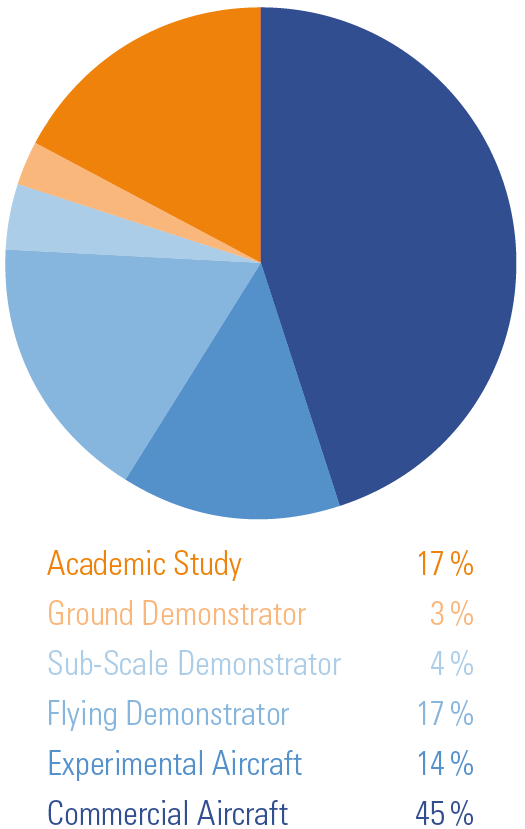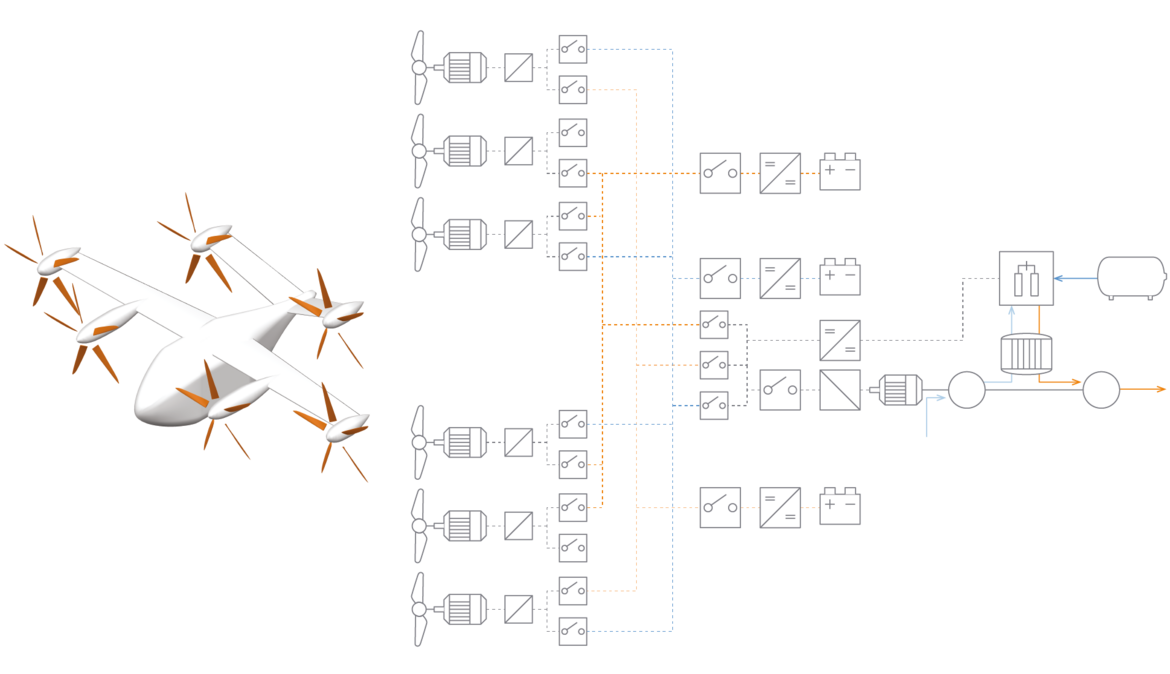Hybrid-electric and hydrogen-based propulsion systems are considered important building blocks for the decarbonisation of aviation. Especially smaller aircraft are currently the subject of research and development due to lower performance and range requirements: on the one hand for demonstration and testing purposes, but on the other hand already with specific ambitions for market-ready products. As part of the Federal Aviation Research Programme, appropriate preliminary design methods for propulsion and aircraft have been developed in the project “Integrated assessment of electro-hybrid propulsion systems for small aircraft” (IVekLu).
The commercial GasTurb™ software was extended to include models for electric propulsion components, hydrogen-powered fuel cell systems, and liquid hydrogen tanks. Furthermore, methods for the design of thermal management systems for batteries have been developed. Due to the large amounts of heat to be dissipated, detailed modelling of these systems is important at the preliminary design stage. Moreover, the existing aircraft design processes have been extended to include methods to model relevant propulsion integration aspects. For example, hydrogen propulsion integration or the reflection of the aerodynamic propeller wing interaction have been addressed.
To demonstrate the developed methods, studies of two representative aircraft configurations have been conducted: a feeder aircraft with serial-hybrid powertrain and blown wing for nine passengers and a vertical take-off tiltrotor configuration with hydrogen fuel cell propulsion and boost batteries with four seats.




